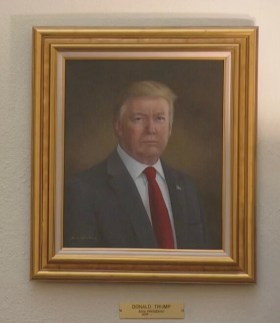Arts marketing is a tough slog.
Post-pandemic, getting attention for arts brands is more difficult than ever. Underfunding in the arts impact arts organisations’ budgets, while arts products are in fierce competition with Netflix and other entertainment and leisure brands (whether they know it or not). They are vying for attention amid changed consumer behaviour, fragmenting arts audiences and “no spend” trends spurred on by dual cost of living and housing affordability crises.
Jump to:
All this is set against a backdrop of complex and interconnected global challenges: war, struggles against inequalities, the extreme and unpredictable impacts of climate change and everything that comes with artificial intelligence (AI). Among all this, arts leaders are caught in a budgetary game of Jenga, with marketing spend often being one of the first blocks to go.
But limited arts marketing budgets are a symptom of how the arts sector undervalues marketing. While many people in our sector recognise its importance, this isn’t translating into a healthy workplace environment for arts marketers.
How some of this undervaluing happens
- We literally pay arts marketers less: Salary packages tied to marketing communications roles are often less than equivalent level programming, production and operations roles.
- They are last in line: Some larger organisations are lucky enough to have a range of marketing roles and specialisations, but this is not the norm.
- They are overloaded: There is a lot to do, and your arts marketer is shouldering all the marketing activities alone.
- They are not seen as strategic: Because their KPIs are drawn down from strategic or business plans and contractual obligations in funding agreements, the marketing role has little input into them.
- “Everyone” is a marketing expert: While arts marketers aren’t contributors to organisational strategy or the development of arts products, conversely everyone else seems to get a say in how arts marketing is done.
- Arts marketing is not a priority: Across the strata of arts marketers, there aren’t many places for them to go for professional networking, to exchange ideas and get inspiration.
- Finally, arts marketing is a thankless job: Ask any arts marketer about where success is attributed in their organisations and you will hear something like this: “If a show is a success it is because of good programming or expert leadership. If it is a failure, it is because of bad marketing.”
These realities for arts marketers should also be understood in relation to other phenomena in the sector. Much of arts budgets comes from grants, some of which exclude asking for marketing money at all. What marketing we can squeeze into grants is often tied to project funding, meaning central marketing activities, such as building brand awareness and ongoing brand development, don’t happen or funds to do them must be tactfully tacked on to project grants where possible.
This isn’t helped by the fact that too often marketing in the arts is viewed as an expense rather than a proactive investment in raising awareness of the organisation, creating value that is meaningful to their buyers and building the strong relationships with customers and audiences that are needed to sustain organisations in the long term.
And the never-ending flow of requests for Facebook posts and vertical videos and email sends leaves little room for experimentation and innovation in arts marketing practice. There is an over-reliance on “doing what we did last time” resulting in formulaic marketing outputs that struggle to cut through the marketing noise that surrounds our audiences.
Part of what perpetuates this treatment of marketing in our sector is the low marketing knowledge baseline in the arts. Many arts marketers have ended up in marketing more by circumstances than by design, so it is not unusual for them to lack knowledge of the fundamentals of marketing, which are the basis of formal qualifications in marketing.
Among all this, arts leaders are caught in a budgetary game of Jenga, with marketing spend often being one of the first blocks to go.
Given all of this, overloading and burnout is very common. To say it is a challenging environment for arts marketing is an understatement. Despite the barriers, here are some thoughts on actions marketers themselves can take, what their managers can do, where arts leaders can step up and where advocacy is needed for sector-level change.
Things arts marketers can do
- Commit to yourself and your practice: While arts marketing-specific training is scarce, lots of training is readily transferable into arts and cultural contexts. Enrol in short courses, attend webinars, read marketing blogs, follow marketers on social media, share your own thoughts and proactively look for ways to stay abreast of emerging trends and technologies. Where you can, dip into your organisation’s professional development budget – it is there for all staff, including you, and you should take advantage of it.
- Make your strategic value known: Proactively demonstrate marketing’s contributions to the organisation’s strategy and goals. Communicate successes effectively. Use quantitative and qualitative data to strongly emphasise that you are a source of strategic insights that can inform all parts of the organisation. Actively connect with colleagues in other parts of the organisation. Learn more about what they do and share marketing knowledge informally with them. As you build rapport you will increase the likelihood marketing will be invited into key discussions and decision-making processes, through formal and informal mechanisms.
- Connect with your peers: Things are busy, but reach out to other arts marketers and form your own communities of practice. Once you have them, connect with them regularly for support, inspiration and to share war stories.
For managers of arts marketers
- Learn about marketing: Managers of arts marketers must have more awareness of how the marketing function works. Gaining foundational marketing knowledge will help you understand the role that reports to you. You could add something marketing related to your own professional development plan, for example. Increased understanding of marketing will help you better understand the strategies and tactics used by your marketer, make better informed decisions and become their champion.
- Be led by your arts marketer: Listen to your marketers’ perspectives, learn from their insights and be led by them. Trust them. Give them autonomy to make decisions, discretion on what strategies and tactics to deploy and space to experiment and innovate.
For arts leaders
- Embrace a “marketing as whole of organisation” mindset: Cross-organisational understanding of marketing strategy can help everyone understand how they contribute to “whole of organisation” marketing efforts. This should include knowing the organisation’s preferred marketing mix (the 7 Ps – Product, Price, Place, Promotion, People, Process and Physical evidence), the audience segments the organisation targets and how the organisation positions itself in relation to competitive offers in the market. After all, everyone who interacts with anyone outside of the organisation is part of the marketing program (whether they know it or not).
- Embed that mindset everywhere: Start small; educate obvious business units such as front of house (FOH) and work outwards. You could add an overview of marketing strategies, key messages and your brand guidelines to staff induction. Adding the all-staff email to the media release list or running marketing briefings for all staff ensures everyone knows the marketing messages and talking points for arts products. Could you ask your marketer to share some of what goes into a marketing campaign at a staff meeting? Or seek out a seasoned marketer to fill the next casual vacancy on your Board?
- Recognise your arts marketer is a strategic asset: Consider if there are ways you can share the day-to-day marketing workload, so your arts marketer has some time to skill up on marketing strategy and be a strategic lever for your organisation, bringing customer-centric insights and perspectives to programming discussions, creative developments and Board meetings.
- Invest more in arts marketing: Get creative with how to grow your marketing budget. What if you factored a core marketing contribution, as well as project-specific marketing expenditure, into project grants? Or what if you committed a minimum of 5% of profits this year to next year’s core marketing activities? Freeing up discretionary marketing money lets you invest in brand-based marketing and gives you resources to let your marketer experiment and innovate outside of project marketing and the day-to-day marketing churn.
- Advocate up and advocate out: Talk to your fellow arts leaders about the importance of audience development as a shared, ongoing, cross-organisational objective rather than a point of competition. After all, no organisation alone has the resources to match Netflix’s marketing spend. Like it or not, you are all competing with that content behemoth and its ilk. Plus, we are also in the recreation, entertainment and leisure product category, so our competitive frame includes anything and everything audiences can expend their entertainment money, time or effort on. Hopefully that realisation alarms you enough to immediately want to advocate to funding bodies, ministers and philanthropists about the importance of properly resourcing marketing, because that’s my final recommendation for arts leaders. This could start with simple questions such as, “Why aren’t marketing activities an eligible expense for many grants?”
Read: Is the secret of arts marketing really to ‘know thyself’?
More and more savvy arts organisations are realising that marketing is essential to their success and are looking for ways to support a “whole of organisation” approach to it. If arts leadership and professionals in other parts of your organisation do not fully understand the marketing function, undervaluing, overloading and transactional relationships run rife. Marketing success hinges on dynamic cooperation across your arts organisation, and exciting new ideas and insights come to the fore when arts marketers are given a seat at the strategy table.
Harnessing all the 7 Ps of marketing (not just Promotion) leads to a holistic, comprehensive, customer-centric marketing program that all staff can see themselves in. Encouraging cross-organisational collaboration and cooperation on integrated marketing communications (IMC) campaigns results in marketing that supports your products, your arts brand and your arts marketer‘s job satisfaction (not to mention their sanity!). Shared vigour in our marketing of arts products and brands is something we can all celebrate. After all, CEOs of arts organisations, artistic directors, programmers, artists and marketers are all driven by the same thing: to get more Australians experiencing unforgettable arts experiences.
This is a condensed version of a keynote presentation from Circuit West’s WA Showcase event held in Perth, Australia, from 6-9 August 2024. To read the entire speech visit Elliott Bledsoe’s website.





